Cape Breton Highlands National Park: 1st Time Visitor Guide
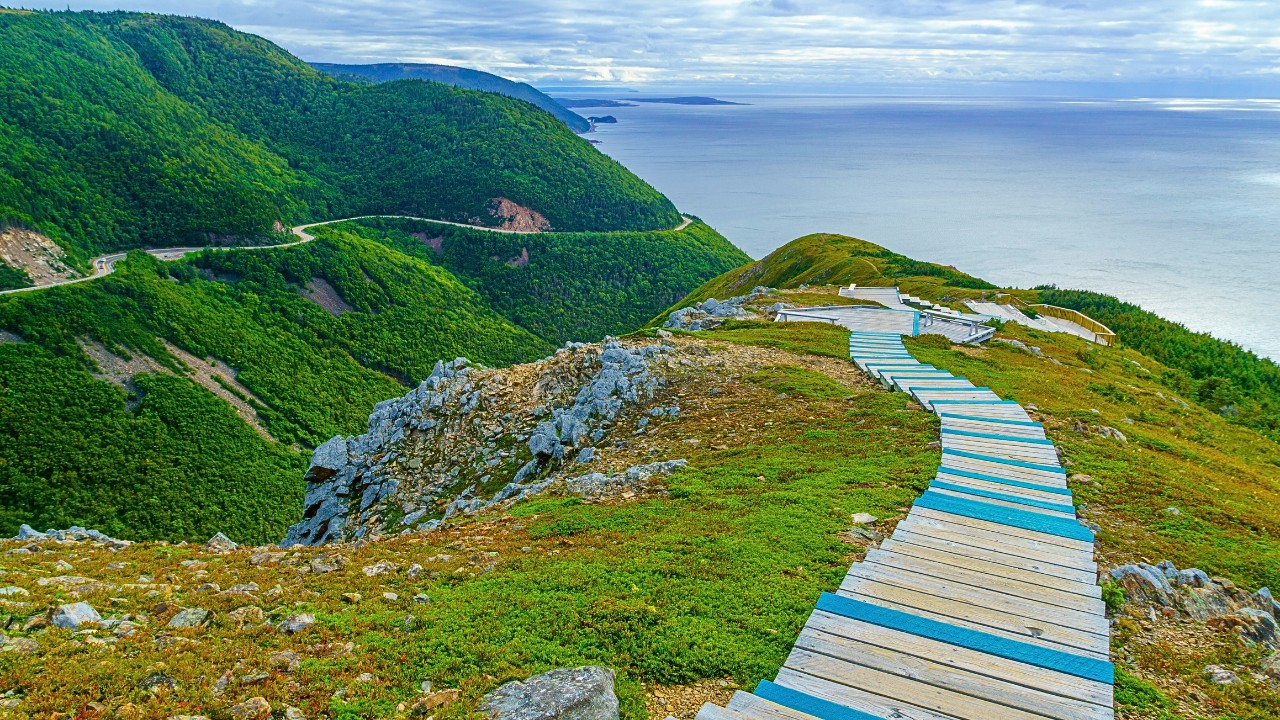
Rugged cliffs, sweeping ocean views, and one of the world’s most scenic drives, Cape Breton Highlands National Park is where mountains meet the sea in dramatic fashion. Whether you’re hiking above the Gulf of St. Lawrence or spotting moose in the highlands, this Canadian gem offers unforgettable moments for first-time visitors and seasoned adventurers alike.
This guide covers everything you need to know to plan your first visit—from how to get there and when to go, to the top hikes, scenic drives, and what to pack for an epic Nova Scotia escape.
Overview
Cape Breton Highlands National Park spans over 950 square kilometers on the northern tip of Cape Breton Island in Nova Scotia, Canada. It’s renowned for its jaw-dropping scenery along the Cabot Trail, which winds through the park, offering panoramic viewpoints, coastal cliffs, boreal forests, and serene river valleys.
The park is also part of the Mi’kmaq ancestral homeland, and Indigenous culture and storytelling are deeply woven into the visitor experience.
Photos:
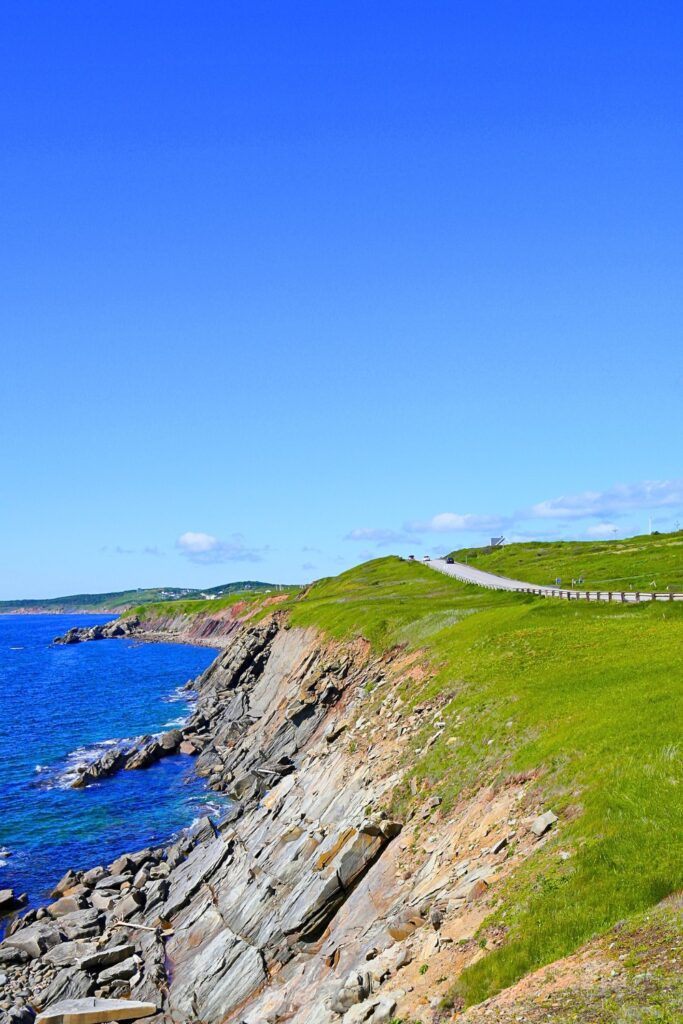
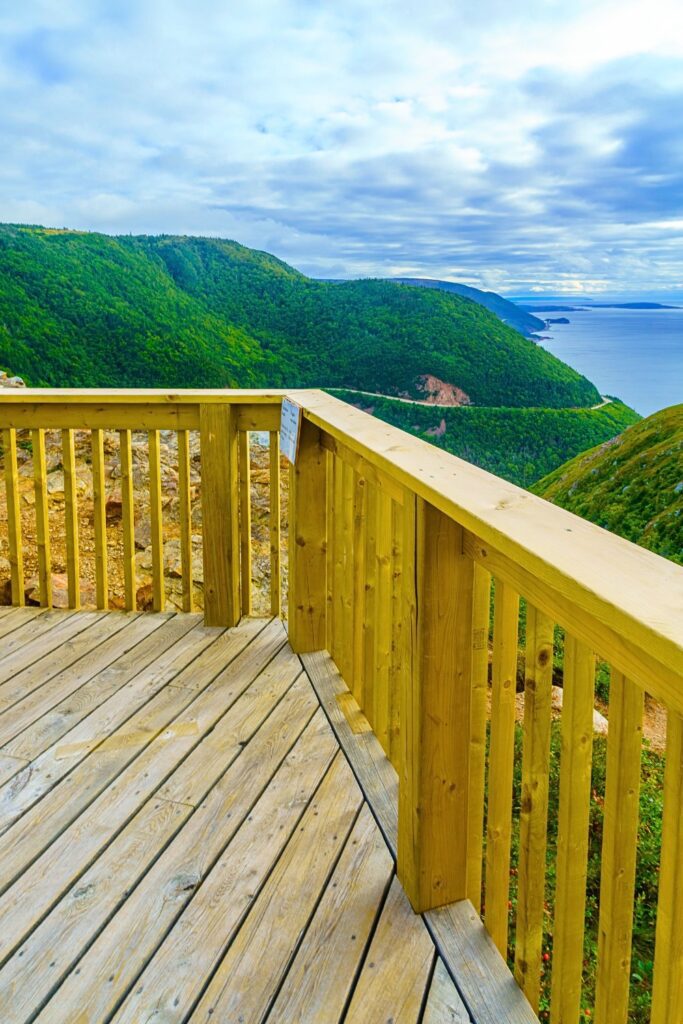
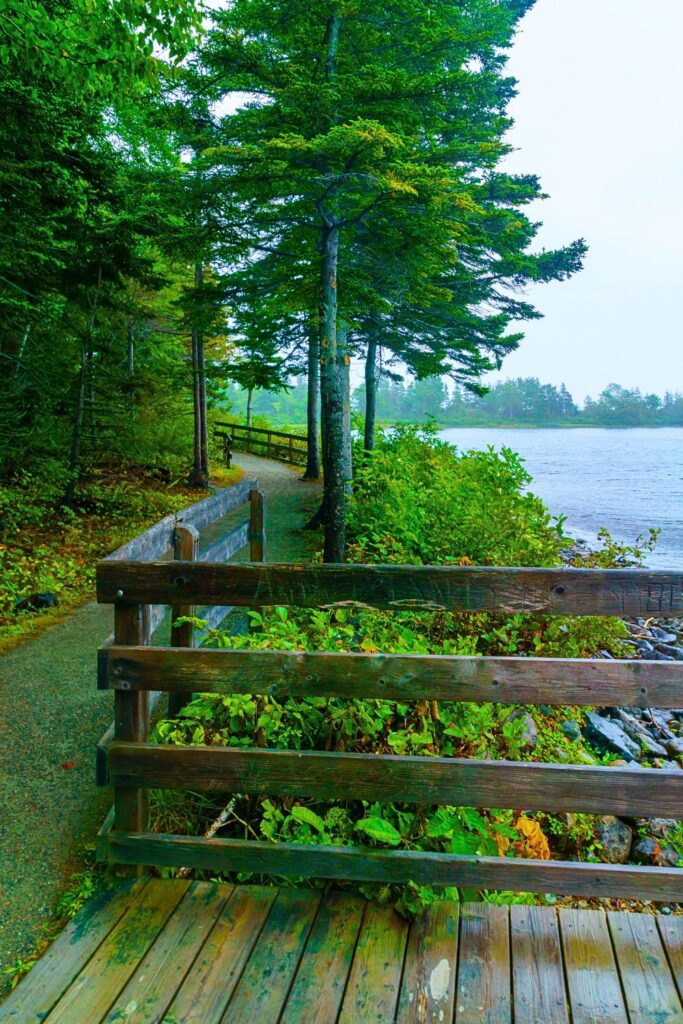

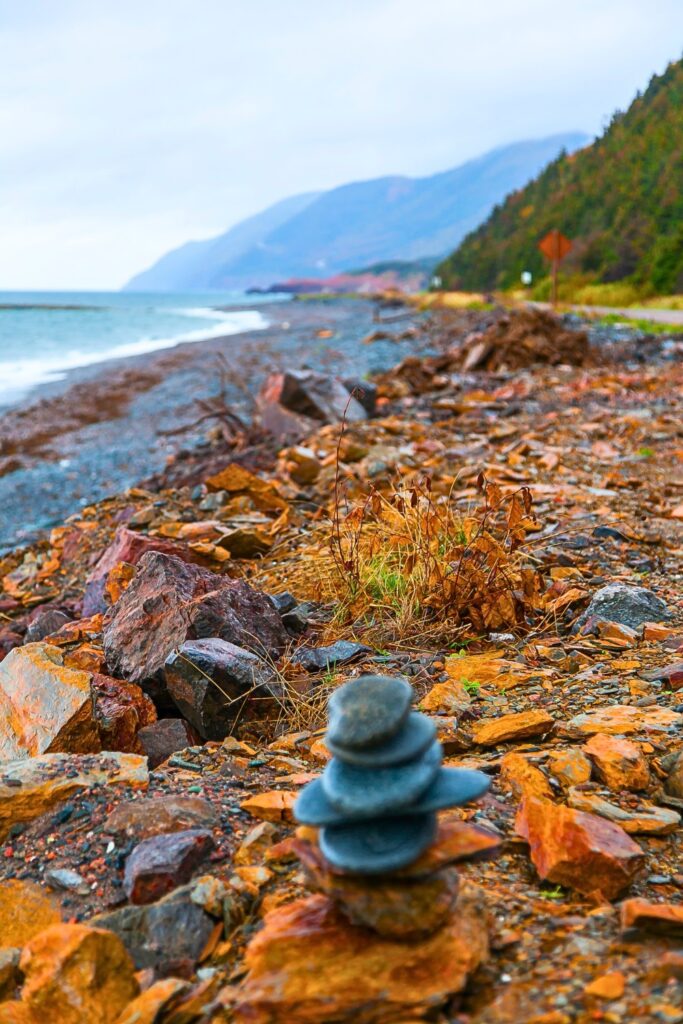
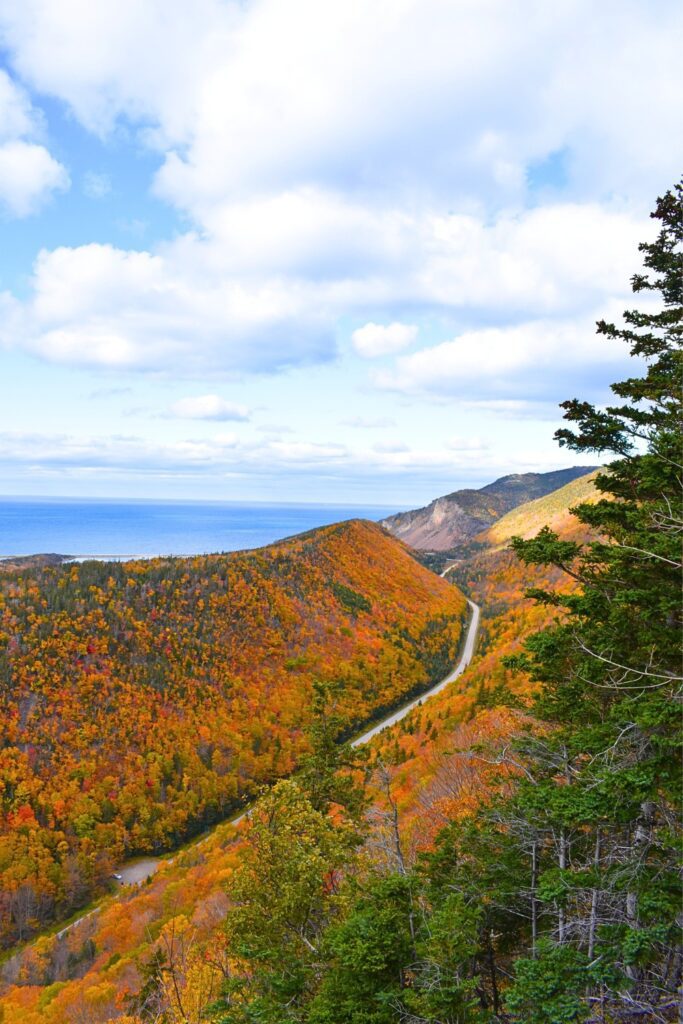

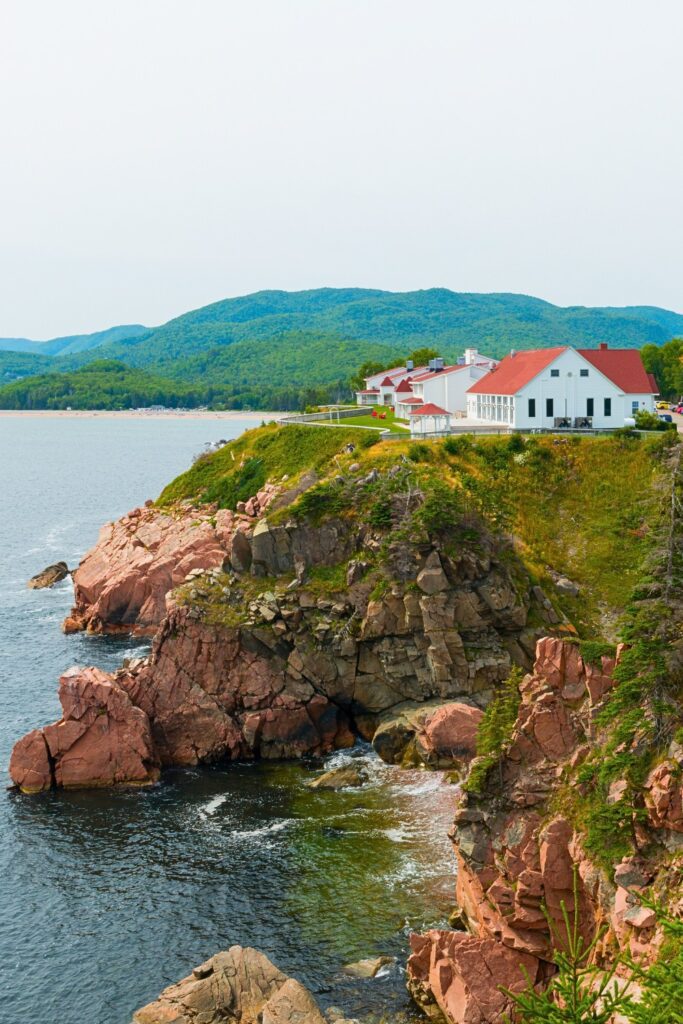

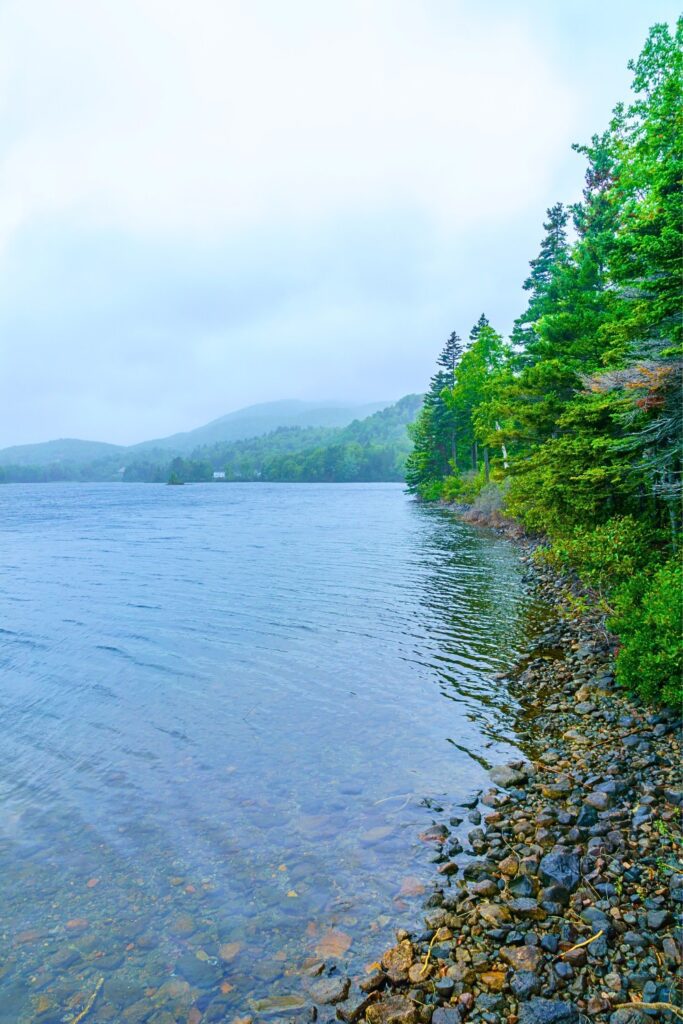
How to Get There
Cape Breton Highlands is remote but accessible with a bit of planning.
Closest major airport:
- Halifax Stanfield International Airport (YHZ) – 4.5 to 5.5 hours away by car.
Driving directions:
From Halifax, drive northeast along Hwy 102, Hwy 104, Hwy 105. You’ll enter Cape Breton Island via the Canso Causeway. Follow signs to the Cabot Trail, which loops around and through the park.
Nearby towns to base your visit:
- Cheticamp (west entrance)
- Ingonish (east entrance)
Best Times to Visit
- Late June to early October is the ideal window to experience everything the park offers.
- July–August: Warmest temps and most accessible trails, but also the busiest.
- September–early October: Fall colors explode across the highlands, offering quieter trails and brilliant scenery.
- May–June: Cooler, fewer crowds, but some facilities and trails may not yet be open.
10 Best Things to Do
- Drive the Cabot Trail – A bucket-list coastal route with pull-offs and photo ops at nearly every bend.
- Hike the Skyline Trail – The most iconic viewpoint in the park (sunset is unforgettable).
- Explore Ingonish Beach – A rare opportunity to swim where freshwater meets saltwater.
- Spot wildlife – Keep an eye out for moose, bald eagles, whales, and foxes.
- Go camping – Stay in a front-country or backcountry site for a real nature immersion.
- Visit Pleasant Bay – A charming coastal village with whale watching tours.
- Stargaze under dark skies – The park is part of a Dark Sky Preserve.
- Join an interpretive program – Learn from park rangers and Indigenous knowledge keepers.
- Photograph fall foliage – The highlands burst into crimson, orange, and gold come autumn.
- Try coastal kayaking – Paddle along rugged shorelines and sea cliffs.
Best Hikes (Beginner to Advanced)
Beginner
- Bog Trail (0.5 km loop): A short boardwalk with interpretive signs, moose sightings likely.
- Lone Shieling (0.5 km loop): Walk through an ancient sugar maple forest.
Intermediate
- Skyline Trail (7.5 km loop): Gentle terrain with show-stopping clifftop views of the Gulf of St. Lawrence.
- Middle Head Trail (3.8 km loop): A peninsula hike with ocean vistas and rocky outcrops.
Advanced
- Franey Trail (7.4 km loop): Challenging elevation with rewarding mountain and ocean panoramas.
- Fishing Cove Trail (12.4 km return): Steep descent to a remote cove, perfect for an overnight adventure.
Packing List
Here’s what to bring to make the most of your first visit:
- My Amazon gear list
- Hiking boots or trail shoes
- Layered clothing (weather changes fast!)
- Rain jacket or windbreaker
- Bug spray and sunscreen
- Reusable water bottle
- Snacks or trail food
- Binoculars for spotting moose and whales
- Camera or smartphone
- Backpack for day hikes
- Park pass (purchase in advance or at the visitor center)
Where to Stay
In the Park:
- Camping – Several campgrounds including:
- Chéticamp Campground
- Broad Cove Campground
- Backcountry sites for a more rugged experience
- oTENTiks – A mix between a cabin and a tent; available at Broad Cove.
Nearby Lodging:
- Cheticamp: Cozy inns, B&Bs, and chalets
- Ingonish: Resorts, cottages, and hotels
- Pleasant Bay & Cape North: Rustic cabins and motels close to trailheads
Things to Know Before You Go
- Entry Pass Required: Daily and seasonal passes available.
- Cell Service is Limited: Download maps or use GPS apps with offline access.
- Wildlife Safety: Keep a safe distance from moose and bears.
- Tidal Conditions: Coastal activities may depend on tides—check schedules in advance.
- Weather Fluctuates: Layers are essential, even in summer.
- Park Offices: Visitor centers in Cheticamp and Ingonish offer maps, info, and ranger advice.
Similar Sights:
Final Thoughts
Cape Breton Highlands National Park is a place that speaks to the soul of travelers who love raw landscapes, coastal serenity, and adventure off the beaten path. Whether you’re hiking a misty ridgeline, stargazing by the ocean, or road-tripping the legendary Cabot Trail, your first visit to this Canadian national treasure will be one you’ll never forget.
